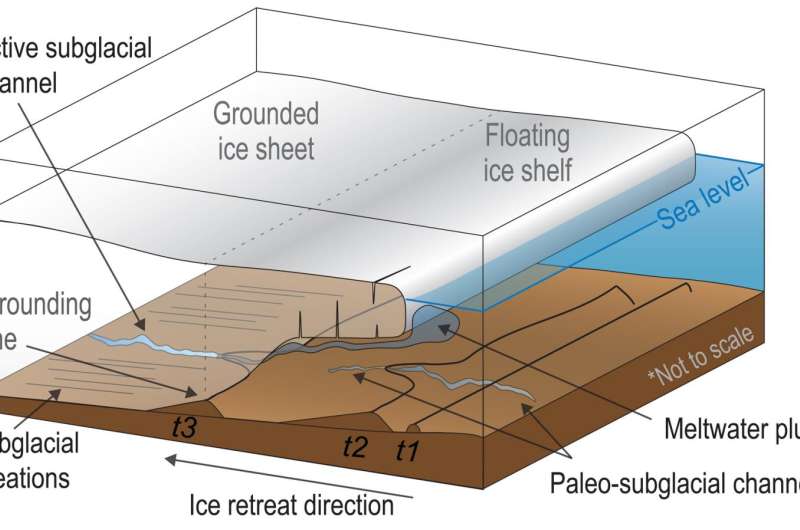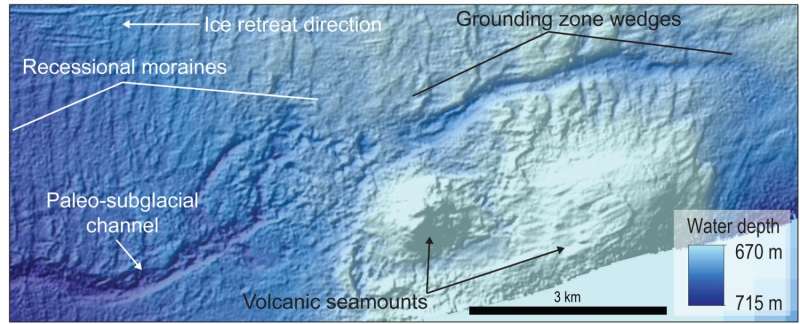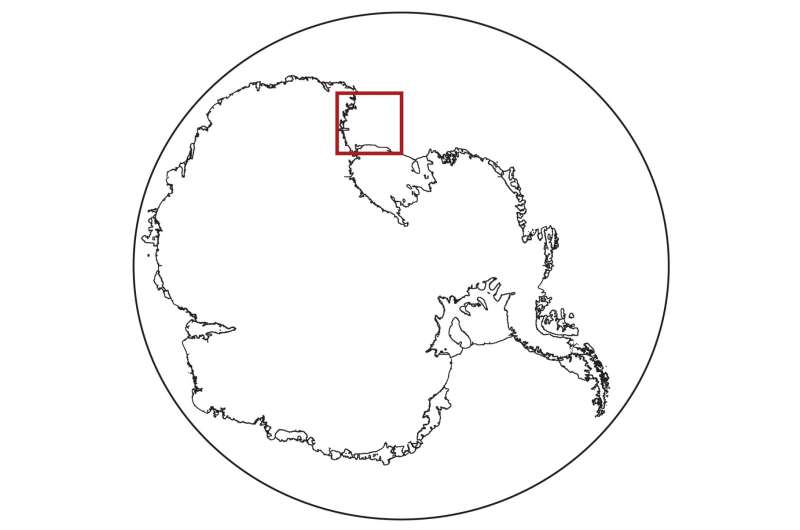Hidden river once flowed beneath Antarctic ice

Antarctic researchers from Rice University have discovered one of nature's supreme ironies: On Earth's driest, coldest continent, where surface water rarely exists, flowing liquid water below the ice appears to play a pivotal role in determining the fate of Antarctic ice streams.
The finding, which appears online this week in Nature Geoscience, follows a two-year analysis of sediment cores and precise seafloor maps covering 2,700 square miles of the western Ross Sea. As recently as 15,000 years ago, the area was covered by thick ice that later retreated hundreds of miles inland to its current location. The maps, which were created from state-of-the-art sonar data collected by the National Science Foundation research vessel Nathaniel B. Palmer, revealed how the ice retreated during a period of global warming after Earth's last ice age. In several places, the maps show ancient water courses—not just a river system, but also the subglacial lakes that fed it.
Today, Antarctica is covered by ice that is in some places more than 2 miles thick. Though deep, the ice is not static. Gravity compresses the ice, and it moves under its own weight, creating rivers of ice that flow to the sea. Even with the best modern instruments, the undersides of these massive ice streams are rarely accessible to direct observation.
"One thing we know from surface observations is that some of these ice streams move at velocities of hundreds of meters per year," said Rice postdoctoral researcher Lauren Simkins, lead author of the new study. "We also know that ice, by itself, is only capable of flowing at velocities of no more than tens of meters per year. That means the ice is being helped along. It's sliding on water or mud or both."

Because of the paucity of information about how water presently flows beneath Antarctic ice, Simkins said the fossilized river system offers a unique picture of how Antarctic water drains from subglacial lakes via rivers to the point where ice meets sea.
"The contemporary observations we have of Antarctic hydrology are recent, spanning maybe a couple decades at best," Simkins said. "This is the first observation of an extensive, uncovered, water-carved channel that is connected to both subglacial lakes on the upstream end and the ice margin on the downstream end. This gives a novel perspective on channelized drainage beneath Antarctic ice. We can track the drainage system all the way back to its source, these subglacial lakes, and then to its ultimate fate at the grounding line, where freshwater mixed with ocean water."
Simkins said meltwater builds up in subglacial lakes. First, intense pressures from the weight of ice causes some melting. In addition, Antarctica is home to dozens of volcanoes, which can heat ice from below. Simkins found at least 20 lakes in the fossil river system, along with evidence that water built up and drained from the lakes in episodic bursts rather than a steady stream. She worked with Rice co-author and volcanologist Helge Gonnermann to confirm that nearby volcanoes could have provided the necessary heat to feed the lakes.
Study co-author John Anderson, a Rice oceanographer and veteran of nearly 30 Antarctic research expeditions, said the size and scope of the fossilized river system could be an eye-opener for ice-sheet modelers who seek to simulate Antarctic water flow. For example, the maps show exactly how ice retreated across the channel-lake system. The retreating ice stream in the western Ross Sea made a U-turn to follow the course of an under-ice river. Simkins said that's notable because "it's the only documented example on the Antarctic seafloor where a single ice stream completely reversed retreat direction, in this case to the south and then to the west and finally to the north, to follow a subglacial hydrological system."

Simkins and Anderson said the study may ultimately help hydrologists and modelers better predict how today's ice streams will behave and how much they'll contribute to rising sea levels.
"It's clear from the fossil record that these drainage systems can be large and long-lived," Anderson said. "They play a very important role in the behavior of the ice sheet, and most numerical models today are not at a state where they can deal with that kind of complexity."
He said another key finding is that drainage through the river system took place on a time scale measured in tens to several hundreds of years.
"We're kind of in this complacent mode of thinking right now," Anderson said. "Some people say, 'Well, the ice margin seems to be stable.' Some people may take comfort in that, but I don't because what this new research is telling us is that there are processes that operate on decadal time scales that influence ice behavior. The probability of us having observed a truly stable condition in the contemporary system, given our limited observation time, is pretty low."
More information: Lauren M. Simkins et al, Anatomy of a meltwater drainage system beneath the ancestral East Antarctic ice sheet, Nature Geoscience (2017). DOI: 10.1038/ngeo3012
Journal information: Nature Geoscience
Provided by Rice University


















